Let’s send Reach a CARE package from the Coast-We owe them a big debt. Screwed up “AI” news reporting has likely added to trauma of the event.
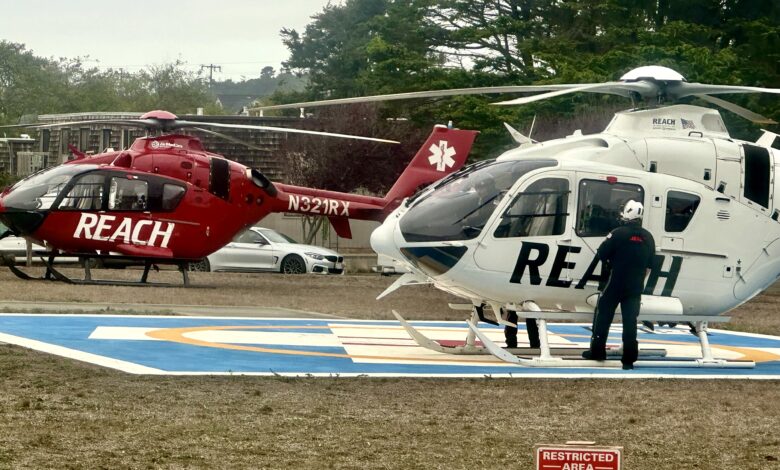
Reach pilot was a former CHP officer and decorated firefighter who apparently saved lives with a crash landing
Five days after a terrible crash onto a Sacramento Highway, three Reach Crew members, all in their 60s, are recovering from broken bones, burns and even being pinned under the helicopter.
As a 61-year-old man, when Frank Hartzell heard these folks were all my age or older I felt particular pain for them hitting the pavement so hard. Nothing against young people but I used to jump 20 feet out of trees and roll on the ground. Now I know just falling down could really alter the course of the rest of my life.
These folks need love. And we owe it to them here on the Mendocino Coast more than most places do.
Let’s put together a care package for Reach after their crash!!!!!! Maybe some Thanksgiving Coffee, Northcoast Brew and probably some of Angel’s wonderful salves for those aching aging parts. If you want to help with this effort, send me an email with “I want to help Reach” in the subject line at frankhartzell@gmail.com. I believe its likely the Hospital Foundation may want to be the ones to do this, but Mendocinocoast.news is in no matter what. We think the Coast should hold an annual bbq for Reach, maybe at MacKerricher and put them up in Air B and Bs. What they do would be worth it and we dont want them ever to forget about us.
Mendocinocoastnews takes this Sacramento-Davis freeway helicopter crash very personally and locally as these Reach crews fly nearly daily into Adventist Health Mendocino Coast Hospital, providing lifesaving transfers to trauma, stroke and heart centers. While all the hospitals in Mendocino and Lake county depend on this network to allow people to get triaged and diagnosed locally to be delivered to a top, ready surgeon elsewhere, the Coast has a much bigger debt to them. This is thanks to the copters sparing so many of us from grueling ambulance rides over State Route 20. When a Reach copter takes folks away from here, they often spare them an ambulance ride over State Route 20. Sometimes they will rendevous at Camp 20 or Little River, to avoid bad weather. That ambulance ride can be really tough deal for patients in transport, although they are stabilized before sending. Its just rough on anyone, especially a sick person. Of course, getting to a trauma, stroke or heart center is lifesaving by itself. I have met these pilots, paramedics and nurses and I think of them as traveling angels. They might start in Wilits, go to Napa and end up the day in Sacramento. They are part of all our communities but have themselves as their own community. That community was rocked when a helicopter apparently had a mechanical malfunction less than a minute after they left the fabulous UC Davis trauma center. The pilot made a miracle landing on Highway 50, hitting no cars, with one car locking up the brakes and ending up only inches from the fuselage, according to the Sacramento Bee. The Bee, for whom I used to cover Yuba and Sutter Counties is a shadow of itself but staffed by real people, that’s a lifesaver in this case.
A huge added indignity in this case has been horrible, awful, rude and wrong news reporting by “AI” news sites and the modern horror that all this trash is shout around by reflector sites. That’s 90 perecent of the media today, unmanned and unwomaned pure garbage. The robots glean partially true information from many sources then pack it into a story and put a fake (or impersonated) human ‘s name on the course.
The worst you will ever see is the following. No Josh didn’t write it. Yes he is real. Almost everything in the news story is false. Dont beleive a word of it. But people are sound asleep about the dangers of AI, they are 1000x greater now than 5 years ago. In a major disaster, what you read below is what will endanger your life. AI doesnt work folks, but becasue everybody thinks it does, its what we get. And its not intelligence, but it is artificial.
- Pilot Chad Millward, 60, of Palo Cedro,
- Paramedic Margaret “DeDe” Davis, 66
- Nurse Susan “Suzie” Smith, 67,
A REACH Air Medical Services helicopter crashed Monday after rushhour onto State Route 50. The aircraft lifted off from UC Davis trauma center and 30 seconds later, according to the Sacramento Bee, it crashed. The helicopter missed all the cars on the freeway, some say miraculously some say by the skill of the pilot who managed to crash land the copter. A big puff of white smoke filled the air, a fire prevention measure. No fire happened. First responders were able to get the pilot and Davis out and traige them and get them into ambulances, headed back to Davis from where they had just left.
Then came the most terrifying part . Nurse Suzie Smith was trapped under the aircraft. The fire captain recruited motorists who had stopped because of the crash. About 10 people lifted and pushed the helicopter wreck off Smith and she, the most injured rescued. The brave volunteers were just the average group of Americans driving down the highway from a powerful farmer to a woman in a halter top all working together like trained Marines on a mission.
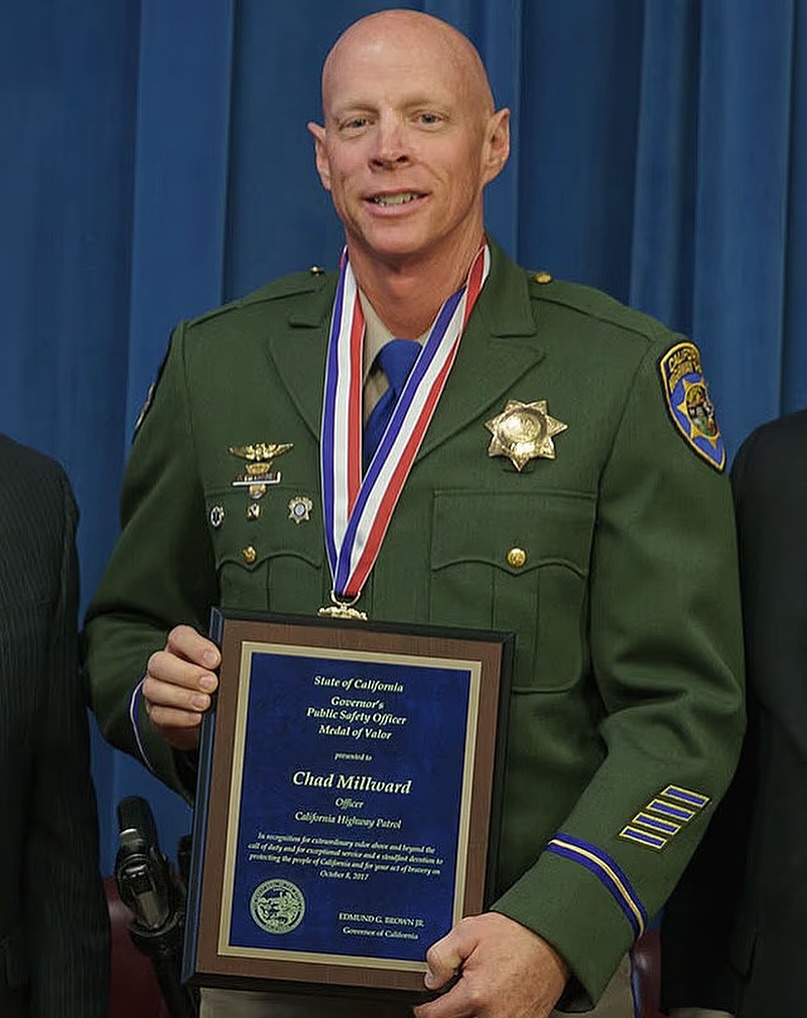
For Mendocino County residents, this tragedy isn’t just news—it’s personal. REACH gives us the chance to
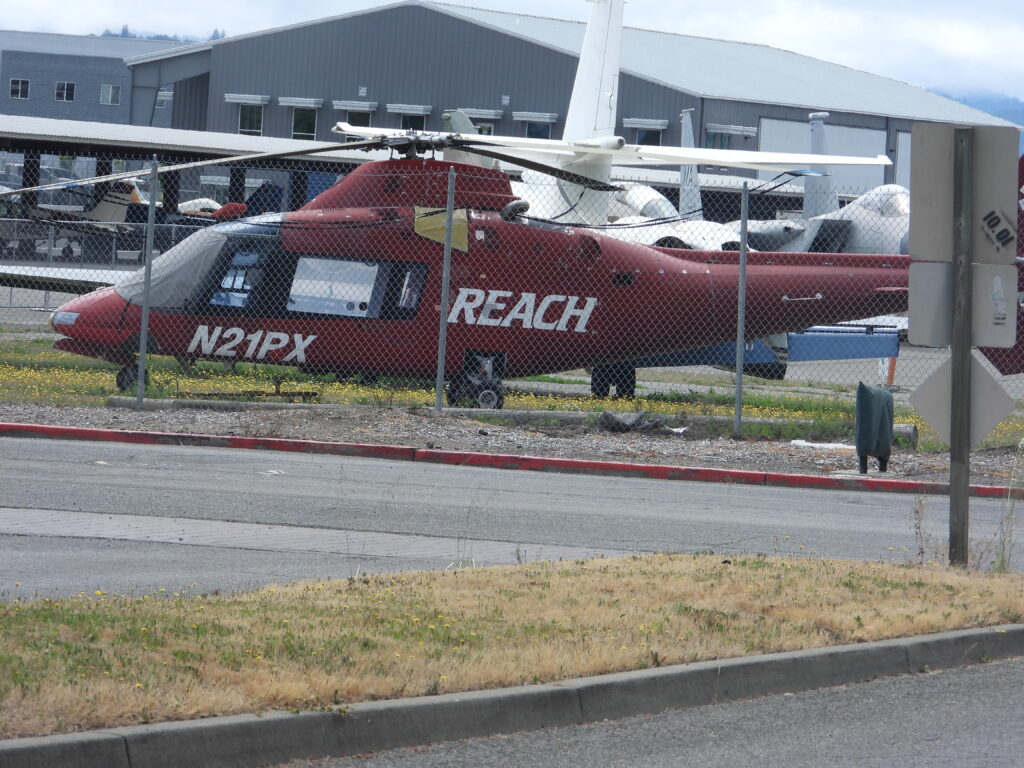
Founded in 1987 by Dr. John McDonald Jr. of Santa Rosa Memorial Hospital, REACH (Redwood Empire Air Care Helicopter) now operates 30 bases across eight states. The company acquired former rival Calstar in 2016, expanding its reach and resources. Their crews typically include two paramedics and a pilot, many trained to fly in adverse conditions—even without instruments. They don’t just transport—they stabilize, they intervene, they save.
How Rare Are REACH Crashes?
Here are some incidents we found about Reach crashes. Reach and all other air ambulances are rated very safe, more safe than auto travel. In recent years, the percentage of fatal accidents have fallen. But all crashes are remembered for many years especially when these courageous people die… Two of the worst incidents in the history of the entire company happened in Mendocino and Humboldt Counties. In fact, very little comparable tragedy has happened outside our immediate area, although Reach has flown over the entire region for decades.
- 2015: A training accident in Apple Valley involving a towel sucked into the tail rotor. No injuries.
- In July 2016, a medical transport plane (not a helicopter) operated by Cal-Ore Life Flight, a subsidiary of REACH Air Medical Services, crashed in Humboldt County, killing all four people on board. Pilot Larry Mills had more than 20 years of flying experience and had been a volunteer first responder for 12 years when in April he started flying for REACH’s Cal-Ore Life Flight based in Crescent City near the Oregon border. Flight nurse Deborah Kroon and certified flight paramedic Michelle Tarwater were aboard a Piper PA31T Cheyenne turboprop with a female patient when the plane crashed sometime after 1 a.m. Friday on private timberland about five miles north of the Arcata-Eureka Airport. They had been headed from Crescent City to Oakland International Airport. National Transportation Safety Board Investigators eventually said the pilot misjudged the weather and failed to use navigational instruments that might have helped him avoid clipping a tree. (Verbage is from NTSB).
- 2022: A bird strike near Yuba City injured a pilot’s leg. No other injuries.
- 2025: This week’s Sacramento crash. Cause still under investigation.
The other tragic Reach related crash happened near Willits in 2003. In December 2003, three people, including a pilot and two nurses, were killed when a REACH (Redwood Empire Air Care) helicopter crashed into a ravine near Willits, California, en route to pick up a patient who had attempted suicide. The National Transportation Safety Board (NTSB) determined that the pilot, Art Gotisar, misjudged the weather and failed to use navigation instruments, which led to improper in-flight planning and the fatal accident. There was no patient on board at the time. Also killed were Kelly Bates, flight nurse and Diane Codding, flight nurse .
REACH averages about 1,800 flights annually nationwide. With 30 bases and a strong presence in Northern California, Mendocino County likely sees hundreds of those flights each year. That means the three incidents represent less than 0.2% of total flights over a decade—and even fewer when narrowed to our coast. Statistically, REACH flights remain among the safest forms of emergency transport.
Local Voices, Local Impact
Fort Bragg nurse and longtime REACH collaborator Maria Lopez reflected, “We see these crews as part of our extended hospital family. They don’t just fly—they show up in the worst moments and make survival possible.”
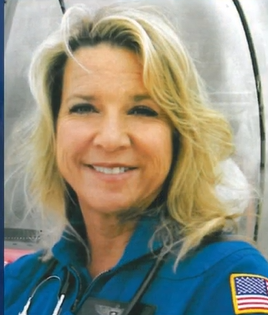
And they do it without fanfare. No sirens, no headlines—just a rotor hum and a promise kept.
But this week, that promise faltered. And with the FAA and NTSB both impacted by the ongoing government shutdown, it remains unclear whether federal investigators are actively involved in the Sacramento crash review. A silence that feels especially loud in rural communities that rely on transparency and trust. The NTSB website said no cases are being updated nor are new cases being added during the shutdown.
Smith is known not only for her service across Northern California but also for her work as a medical missionary in Nicaragua and Sri Lanka. Her family and friends describe her as “tough as nails” and “dedicated to serving others,” and have asked for prayers for the recovery of all three crew members. She was publicly identified by her family, while the names of the other two people were unavailable.
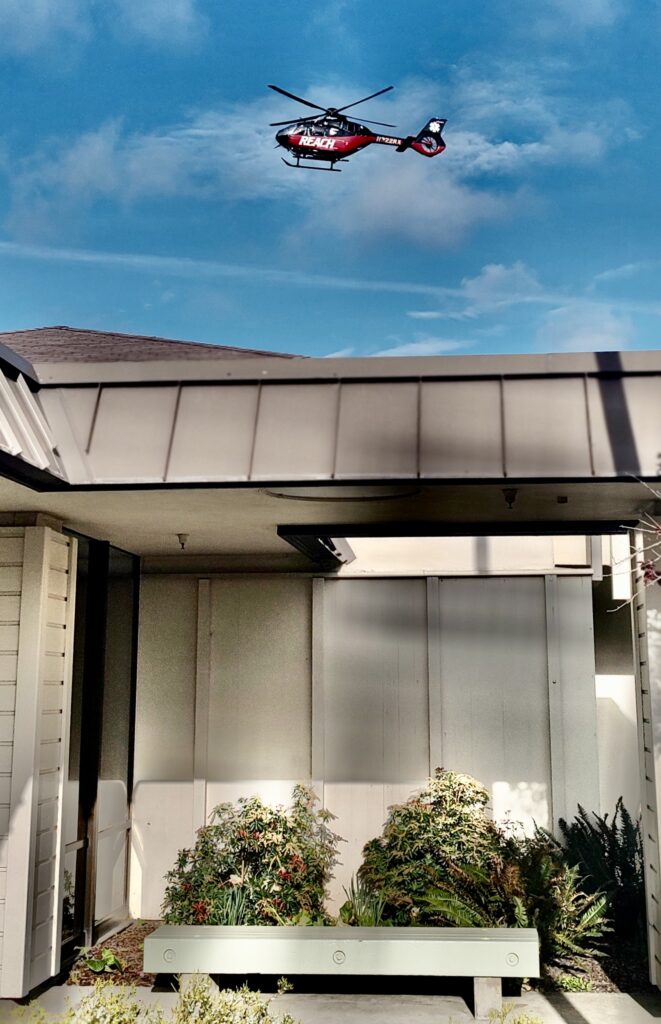
As the community rallies around Smith and her crew, Mendocino County residents are reminded of the quiet heroism behind each flight—and the fragility of the systems that keep rural healthcare connected.
These helicopters don’t just skim the skies—they stitch together the fractured edges of rural medicine. They rise through fog, wind, and bureaucratic silence to deliver what the coast cannot always provide: time, expertise, and a fighting chance.
And when one of them falls, we feel it in our bones. In every ER hallway where a REACH crew once landed. In every family that got one more day. In every nurse who knows the sound of rotor blades means hope.
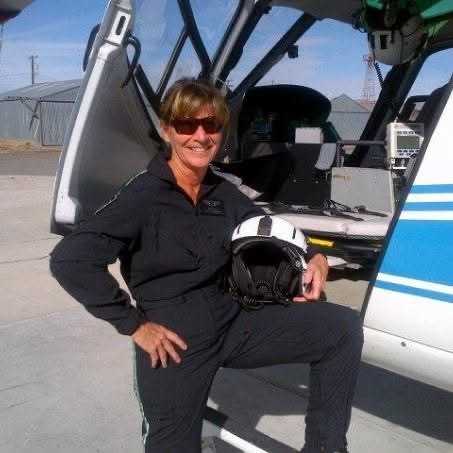
From the Sacramento Bee—Margaret “DeDe” Davis enlisted in the Marines as an 18-year-old and then transferred to the Navy to work toward a life’s goal of becoming an emergency responder. She later became a volunteer firefighter in the Plumas County town of Chester, then joined MedX AirOne in Nevada as a flying paramedic in 2019, according to a post spotlighting her accomplishments on the Intermountain Health Instagram account.
A medical journal dedicated to air flight issues did an original study of medical transport by air and found that deaths have been decreasing in recent years, even as the number of medical helicopters and fixed wing aircraft have been increasing three fold. However the number of total crashes per million miles flown has not changed dramatically in recent years, despite big improvements in helicopter safety and weather forecasting. The research and study for the article showed one big factor for crashes is pilot experience on that particular aircraft type. Read the article: Analysis of Helicopter Air Ambulance Accidents in the United States From 2010 to 2021 – Air Medical Journal
This week, we don’t just pray for recovery—we recommit to the truth: that rural lives deserve swift care, clear answers, and the kind of infrastructure that doesn’t vanish when the government shuts down.
Because out here, heroism isn’t loud. It flies low, lands hard, and saves quietly. And when it’s grounded, we rise.
The helicopter is European made. Here is some information about the model of helicopter. The tailnumber was N414Rx. The helicopter had made 7 flights since the early morning minutes after midnight on the day of the crash till the time of the crash on Monday afternoon, the crew traversing up and down the corridors between Redding and Sacramento with stops in Redbluff, UC Davis and a Sacramento hospital included.
The EC-130 T2 is a single-engine helicopter from Airbus (formerly Eurocopter) that features an Arriel 2D engine, a Fenestron tail rotor, and a large, versatile cabin for up to seven passengers. It is known for being a quiet aircraft with an advanced anti-vibration system and improved safety features. The “T2” designation signifies technological upgrades over the earlier EC130 B4 model, including a more powerful engine, an upgraded gearbox, and a more modern, comfortable cockpit.
Editor’s note- We chose not to share the video of the crash that is a viral video on the Internet.
